
Oilseed radishes
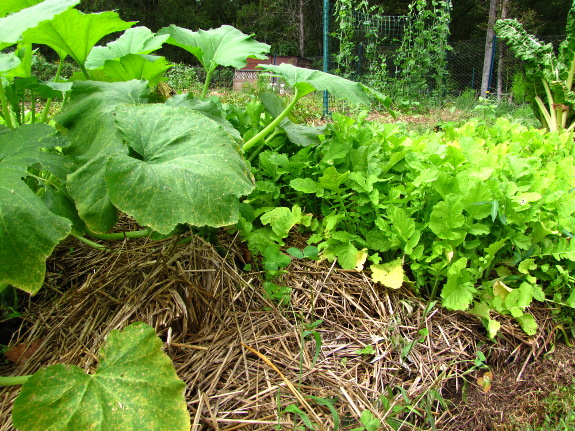
This week is our last
chance to plant oilseed radishes, so I made a lot of hard-nosed
decisions. For example, I ripped out all of the older beds of
beans and just kept one to enjoy until the frost --- I'd rather miss
out on some subpar beans than lose a whole season of
cover-cropping. Similarly, the oilseed calendar is the main
reason I harvested
my sweet potatoes
this week, since I wanted to be able to put cover crops in the tubers'
place.
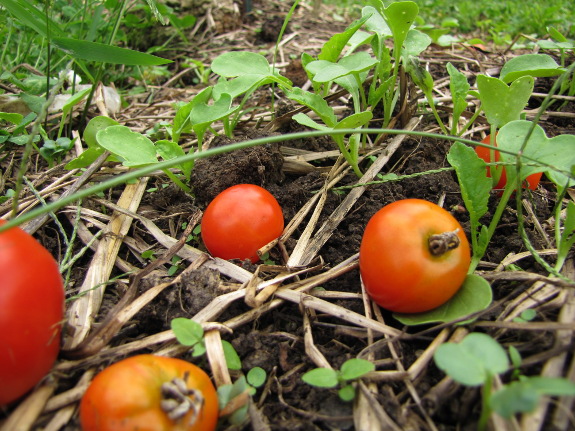
Meanwhile, I slipped
oilseed radishes into gaps where fall crops didn't come up, and I even
pulled back the mulch and tossed down seeds around sweet corn that will
be done bearing this week and around tomatoes that look too blighted to
last much longer. Since my new method of cleaning up after large
crops involves cutting the spent plants at ground level and leaving the
roots in place, removing the finished vegetables won't disrupt the
radish seedlings. And I figure the oilseed radishes won't get big
enough to compete before the corn and tomatoes are done.
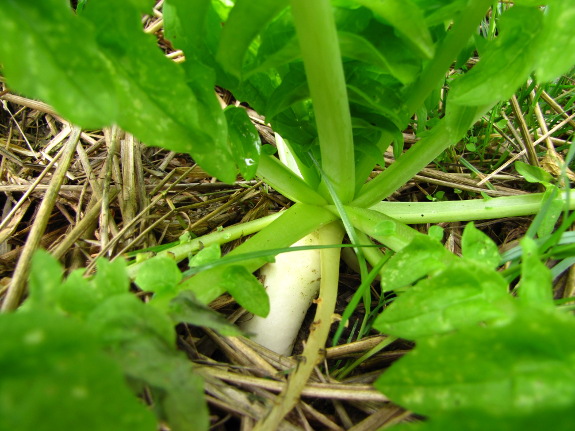
Since Mark talked me
into splurging on 25 pounds of oilseed radish seeds, I'm trying out
some crazy experiments too. I
seeded an entire chicken pasture in oilseed radishes and planted some radishes
around the base of a young apple tree. I'm not too thrilled with
the pasture planting --- I think the shade set the cover crop back --
but the apple has sparse enough leaves that I think it might coexist
quite well with the radishes.
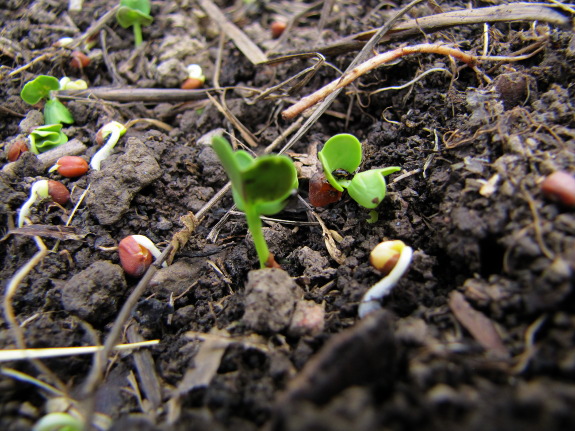
Unlike buckwheat seeds
(which get eaten up by cardinals in short order
if I don't sprinkle a light coating of straw over top after planting),
radish
seeds don't seem to be enjoyed by wildlife. So I simply scatter the
radish seeds on the soil surface by eye, often ending up seeding
thicker than I really should (like in the photo above). I figure
it's worth a bit more seed to keep effort to a minimum.
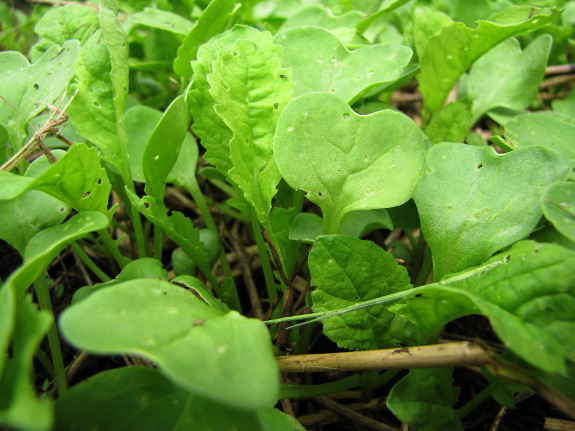
All told, I used 12
pounds of oilseed radish seeds this year, which cost about $43.
If I figure I planted about 5 pounds of that in 27 beds in the garden
(with the rest going into the pasture), that comes to 66 cents per bed,
compared to maybe 83 cents per bed if I overwintered the garden by
mulching it with straw. Of course, it
would be considerably cheaper to use oats as our winter cover crop, but we wanted to give
oilseed radishes a more serious try this year to see if they're worth
the extra money.
In case you haven't been
following along for the last couple of years, here are some relevant
posts about oilseed radishes:
- The
potential of oilseed radishes
- My two favorite no-till winter cover crops
- When to plant oilseed radishes
- How
to kill no-till cover crops
- What oilseed radishes look like in February
- Organic matter production of my favorite cover crops
- Improving soil with cover crops
- Choosing
cover crops
Hopefully that'll
inspire you to try out some cover crops in your garden, if not this
year, then next.
Want more in-depth information? Browse through our books.
Or explore more posts by date or by subject.
About us: Anna Hess and Mark Hamilton spent over a decade living self-sufficiently in the mountains of Virginia before moving north to start over from scratch in the foothills of Ohio. They've experimented with permaculture, no-till gardening, trailersteading, home-based microbusinesses and much more, writing about their adventures in both blogs and books.
Want to be notified when new comments are posted on this page? Click on the RSS button after you add a comment to subscribe to the comment feed, or simply check the box beside "email replies to me" while writing your comment.

Great ideas for the oilseed radish. I used some for the are patches in our garden and had great success. Chad